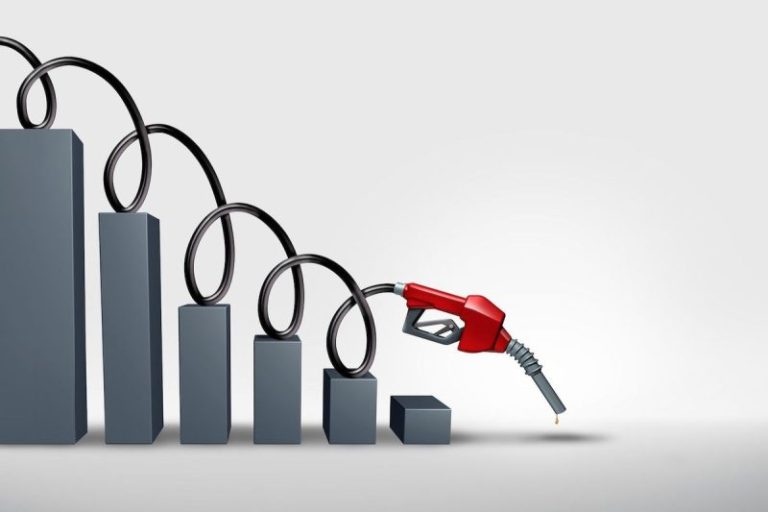The global oil market is facing a sharp downturn as a wave of recession fears, aggressive trade policies and a surprise supply boost from OPEC+ collide to send prices tumbling to multi-year lows.
Although crude prices staged a modest recovery on Tuesday (April 8), the broader market trajectory remains grim, with Brent and West Texas Intermediate (WTI) crude now trading well below levels needed for profitable production in the US.
Oil prices have dropped precipitously since early April, reaching levels not seen since 2021 on April 4 soon after US President Donald Trump’s announcement of sweeping new tariffs on dozens of countries.
Brent and WTI remain depressed despite small upticks on Tuesday, with Brent rising 1.03 percent to reach US$64.87 per barrel, and WTI gaining 1.24 percent to hit US$61.45 per barrel.
Double hit: Tariff shock and OPEC+ supply surge
The catalysts for the broad decline are a one-two punch of a deepening trade conflict between the US and China, and a surprise production surge from OPEC+ nations.
Trump’s tariff announcement — described by JPMorgan (NYSE:JPM) as the ‘largest tax hike on Americans since 1968’ — has rattled global markets and sent oil traders into a panic over demand destruction.
Beijing has responded with defiance, promising to fight to the end and calling Washington’s demands “blackmail.’
At the same time, OPEC+ — the alliance of major oil producers led by Saudi Arabia and Russia — announced an unexpected increase of 411,000 barrels per day in May output, compressing three months of planned supply expansion into a single move. The boost comes after months of US pressure to increase supply and push down energy prices.
But the timing could not have been worse for American producers. Analysts say the combined impact of slowing global trade and higher supply of the energy fuel has left the American oil industry vulnerable. Prices have dropped below the US$65 threshold needed to sustain profitable drilling activity across much of the US.
According to the latest Dallas Federal Reserve energy survey, even operations in the Permian Basin — the lowest-cost production zone in the country — require crude to trade above US$61 to remain economically viable.
“You’re probably seeing more pauses of initial investment intention than the initial Covid shock. It’s really bamboozling,” Rory Johnston, a veteran oil analyst and publisher of the Commodity Context newsletter, told Heatmap.
“Everything else is really, really starting to grind to a halt, and you’re not seeing anyone jumping over themselves to ‘drill, baby, drill,’ despite the White House’s claims,” Johnston added.
Equity markets have punished energy companies accordingly. Oilfield services giant Halliburton (NYSE:HAL) shed 20 percent in a single week, while Nabors Industries (NYSE:NBR) lost 30 percent in just five days.
The oil majors fared slightly better, but still saw significant losses, with ExxonMobil (NYSE:XOM) down 10 percent, Occidental Petroleum (NYSE:OXY) down 15 percent and Chevron (NYSE:CVX) falling 13 percent.
Tariff fallout threatens global energy outlook
There is growing concern among market watchers that if economic activity continues to weaken under the weight of tariffs, further declines in both oil and gas demand are likely.
Crucially, many of the countries most affected by Trump’s tariffs — particularly in Southeast Asia — were previously projected to drive the bulk of oil and energy demand growth over the next decade.
Vietnam, Cambodia and four other Southeast Asian nations were hit with tariffs exceeding 45 percent, prompting concerns that their economies could stall or contract.
“The macro concern is that if these tariffs stay where they are, this is in a global recession, if not a depression-making place,” Johnston elaborated in his conversation with Heatmap. “And given that the highest tariff rates are on Asia in particular, and that’s where all growing oil demand is, it’s not good for oil.”
Meanwhile, US producers are grappling with higher costs for drilling inputs due to tariffs on steel, aluminum and other industrial goods. Johnston explained in a Bluesky post that drillers have reported a 30 percent spike in the cost of tubular steel pipe, a critical material for oil and gas wells, since Trump implemented a 25 percent steel tariff in February.
So far, OPEC+ officials have not signaled any plans to curb output again.
For now, the market remains volatile, and producers are in a state of limbo. Despite early promises of energy dominance and renewed drilling, Trump’s policy choices have left the sector reeling.
“The administration’s chaos is a disaster for the commodity markets. ‘Drill, baby, drill’ is nothing short of a myth and populist rallying cry. Tariff policy is impossible for us to predict and doesn’t have a clear goal,” one executive told the Dallas Fed last month.
Securities Disclosure: I, Giann Liguid, hold no direct investment interest in any company mentioned in this article.

